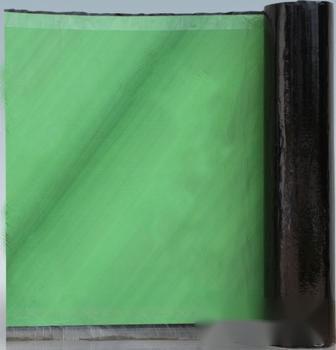1. Product Introduction:
YN-A500 polymer composite self-adhesive waterproof membrane, commonly referred to in the industry as CPS (Pdymer Compound Self- adhesive Waterproof Sheets), is a high-performance self-adhesive waterproof membrane made of a layer of gel-like silicone creep rubber asphalt adhesive and a composite surface of polymer composite pure materials. The polymer pure materials include HDPE, EVA, ECB, and PET, among other series of high-performance materials.
This material can be applied wet and can be installed using the pre-paving reverse adhesion method, allowing for flexible construction methods based on different design requirements.
2. Product Features:
YN-A500 polymer composite self-adhesive waterproof membrane has a high elongation rate and tear resistance, effectively preventing the natural growth and penetration of plant roots in green areas and squares.
It is resistant to various acids and alkalis, non-toxic, odorless, and harmless to the environment, meeting environmental protection requirements. With its physical and chemical indicators, its service life can reach over 50 years.
The adhesive sealing performance is good, effectively preventing water seepage.
3. Application Scope:
Applicable for high-grade important waterproof projects such as green roofs, grain storage, air raid shelters, sewage treatment, artificial lakes, basements, tunnels, subways, high-speed rail, bridges, and landfill seepage prevention.
4. Precautions:
1. Before bonding the seams of the membrane, avoid contamination of the overlapping surface with water or cement mortar to ensure the bonding effect of the seams.
2. After completion, protect the waterproof layer and avoid damaging the membrane with metal or hard objects.
3. After seam construction, check the seams of the membrane, and if any damage is found, seal it with sealing materials.
4. Construction procedures should be followed step by step and should not be overlapping.
5. Contact with organic solvents is prohibited, and it should be kept away from fire sources.
6. The membrane should be stored in a dry and ventilated environment to prevent exposure to sunlight and rain.













